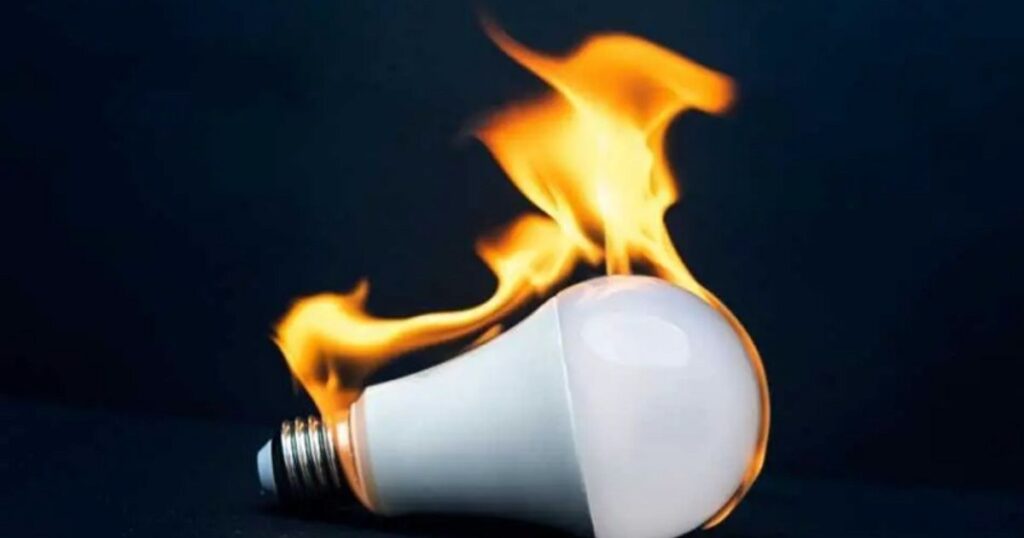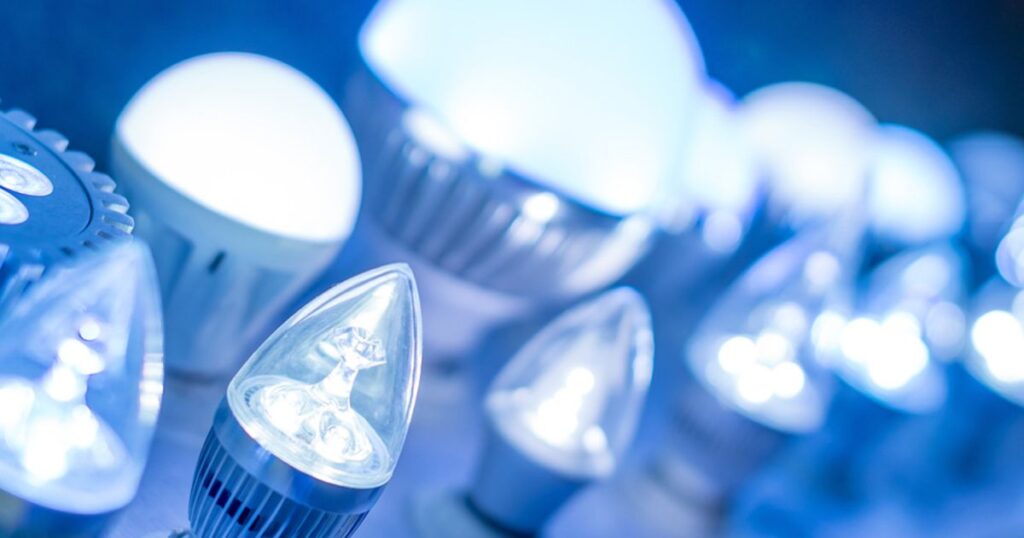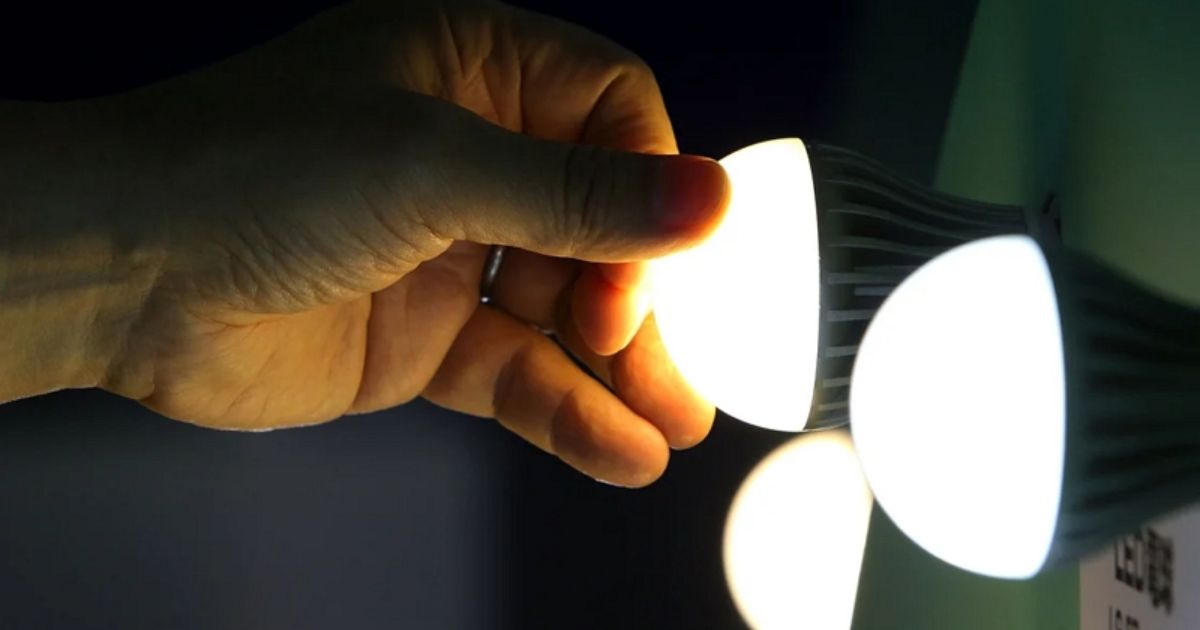If you’re wondering ‘do LED lights get hot?’, you’re not alone! With more extreme temperatures being seen every year, homeowners are looking for quick and cost-effective ways to cool down their homes. Turning off LED lights could be one solution, but will it really make any noticeable difference?
As energy costs continue to rise and people become more environmentally conscious, LED lighting has become an increasingly popular choice over traditional incandescent bulbs. There’s still some confusion around whether these modern bulbs actually generate heat.
In this article, we’ll dive deep into the question of whether LEDs get hot, explore the factors that affect their heat output, and discuss the potential implications for home lighting.
Do LED Lights Get Hot?

The short answer is yes, LED lights do get somewhat hot, contrary to what many people think. However, it’s important to understand that they get hot in a very different way compared to traditional incandescent bulbs. Traditional incandescent bulbs generate heat primarily through infrared radiation, which causes the surface of the bulb to become extremely hot to the touch.
In fact, you’ve probably had to wait for a burned-out incandescent bulb to cool down before removing it from its fixture. LED bulbs, on the other hand, generate heat through their internal components that create the light. As Michael Meiser, a light expert from Lumilum, explains:
While some rumor that LED lights don’t produce heat, that is not fully true. While the beam doesn’t produce any infrared radiation, the fixture does produce heat. So, while LED bulbs don’t get as hot on the surface as incandescent bulbs, their internal components do generate heat.
According to Meiser, only 20-50% of an LED bulb’s energy is converted into heat, compared to a staggering 90% for incandescent bulbs. It’s crucial to note that if LED bulbs are not adequately ventilated, they can overheat, which can significantly reduce their lifespan and even cause them to shut off periodically as a safety precaution.
As Peter Legg, the lead designer at där lighting, points out:
LED bulbs don’t tend to heat up as they are inherently low heat tech, but if they are left running in an enclosed space with no ventilation, for example, in a small glass shade, this can cause them to heat outside of their usual temperature. This will drastically shorten their lifespan and could cause your light to trigger its ‘safe mode’ where it will turn off periodically.
Read More : How Long Do Led Lights Last?
Are There LED Lights That Don’t Get Hot?
Unfortunately, there are no LED lights that don’t produce any heat at all. As with anything that generates energy, LEDs will always produce at least a small amount of heat as a byproduct.
However, there are steps you can take to minimize the heat output of your LED lights and ensure that they operate at their optimal temperature:
- Don’t leave LED lights on for extended periods: Continuous operation can cause the LED components to overheat, so it’s best to turn them off when not in use.
- Follow manufacturer’s instructions for power supply: Using the recommended power supply can help prevent overheating and ensure optimal performance.
- Increase ventilation and spacing: LED bulbs in small, stuffy rooms or enclosed fixtures will heat up faster than those in larger, well-ventilated spaces.
Can LED Lights Cause a Fire?

It is highly unlikely for LED lights themselves to cause a fire due to their relatively low operating temperatures. As Michael Meiser explains:
Compared to incandescent bulbs that can reach a temperature of 216°C after just 3 minutes, LEDs will never get to a temperature that could cause a fire. It’s important to note that while the LED bulbs themselves pose a minimal fire risk, improper installation or faulty wiring in the circuit could potentially lead to a fire hazard.
Peter Legg also warns about the potential risks associated with string or strip lights:
String and strip lighting could pose a higher risk as more lights are powered from one source. To reduce the fire risk, ensure you don’t install string or strip lights near flammable materials, fit them in tight spaces, and check that the socket is not overloaded.”
Why Choose LED Lights Over Other Bulb Types?
Despite the potential for some heat output, LED lights offer numerous advantages over traditional incandescent and halogen bulbs. Here are some of the key reasons why you should consider making the switch:
- Energy efficiency: LED lights use up to 90% less energy than incandescent bulbs and up to 80% less energy than halogen bulbs.
- Longer lifespan: While incandescent bulbs typically last around 1,200 hours, and halogen bulbs last twice as long, LED bulbs can last an impressive 25,000 to 50,000 hours on average. That’s up to 25 times longer than incandescents!
- Cost-effective: Due to their energy efficiency and extended lifespan, LED bulbs can save you a significant amount of money on your energy bills and replacement costs over time.
- Environmentally friendly: By consuming less energy and lasting much longer than traditional bulbs, LED lights have a smaller environmental footprint and contribute to reducing greenhouse gas emissions.
- Smart home integration: Many LED bulbs are compatible with smart home systems, allowing you to control your lighting using voice commands, a control hub, or a smartphone app.
Bonus Tips: How to Prevent Light Degradation in LED Bulbs?

While LED bulbs have a significantly longer lifespan than other types of bulbs, their light output can degrade over time, reducing the brightness and color quality. To help prevent this, consider the following tips:
- Use quality LED fixtures with good heat sinks: Heat sinks are designed to help dissipate excess heat from the LED components, which can slow down the degradation process.
- Minimize vibrations around the bulbs: Excessive vibrations, such as those caused by ceiling fans or doors slamming shut, can accelerate the degradation of LED bulbs.
- Ensure proper installation and ventilation: As mentioned earlier, proper installation and adequate ventilation are crucial for preventing overheating, which can lead to faster degradation.
Conclusion
While LED lights do generate some heat, their heat output is vastly lower than that of traditional incandescent and halogen bulbs. By understanding the factors that affect LED heat production and taking the necessary precautions, you can enjoy the numerous benefits of this energy-efficient and long-lasting lighting technology without compromising your home’s comfort or safety. So, why not make the switch to LED lights and start saving money while reducing your environmental impact today?













